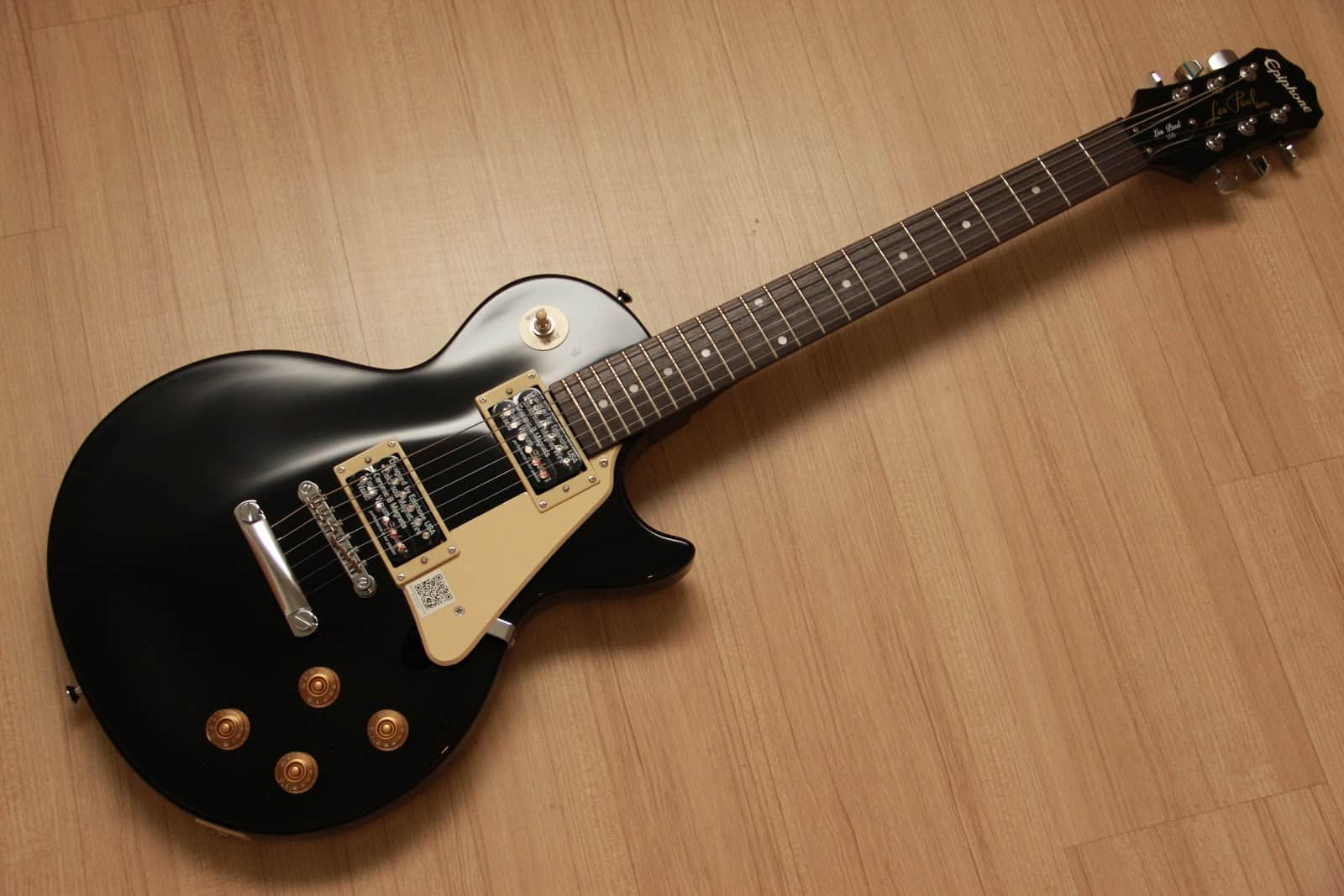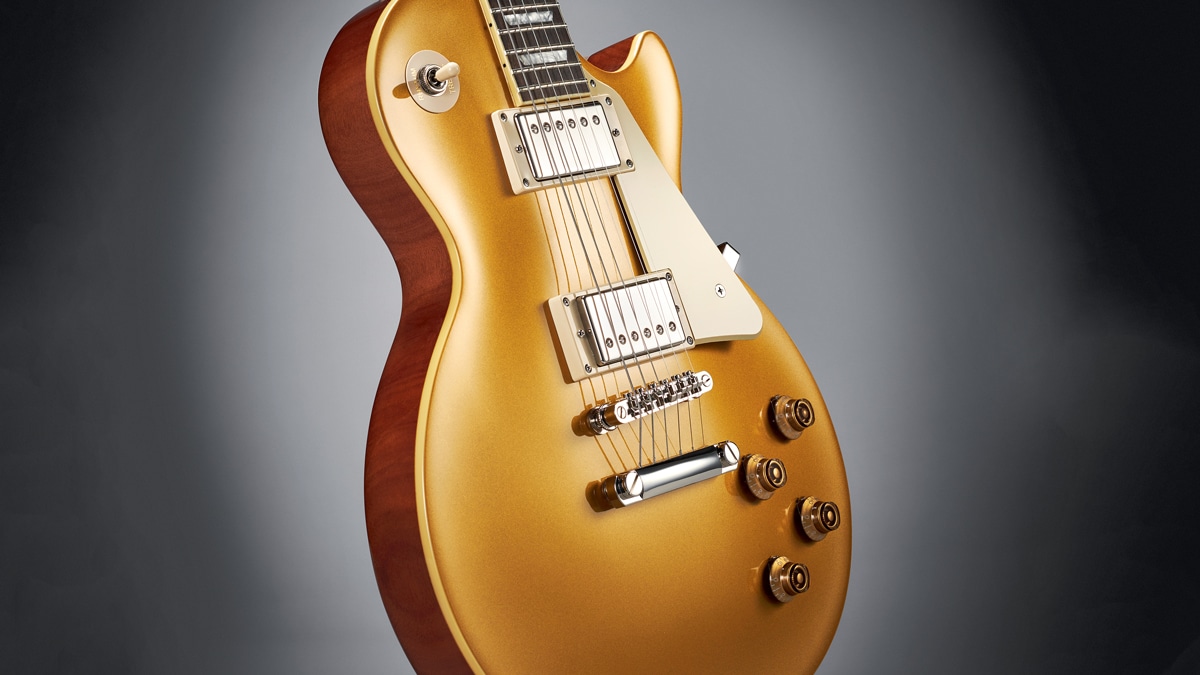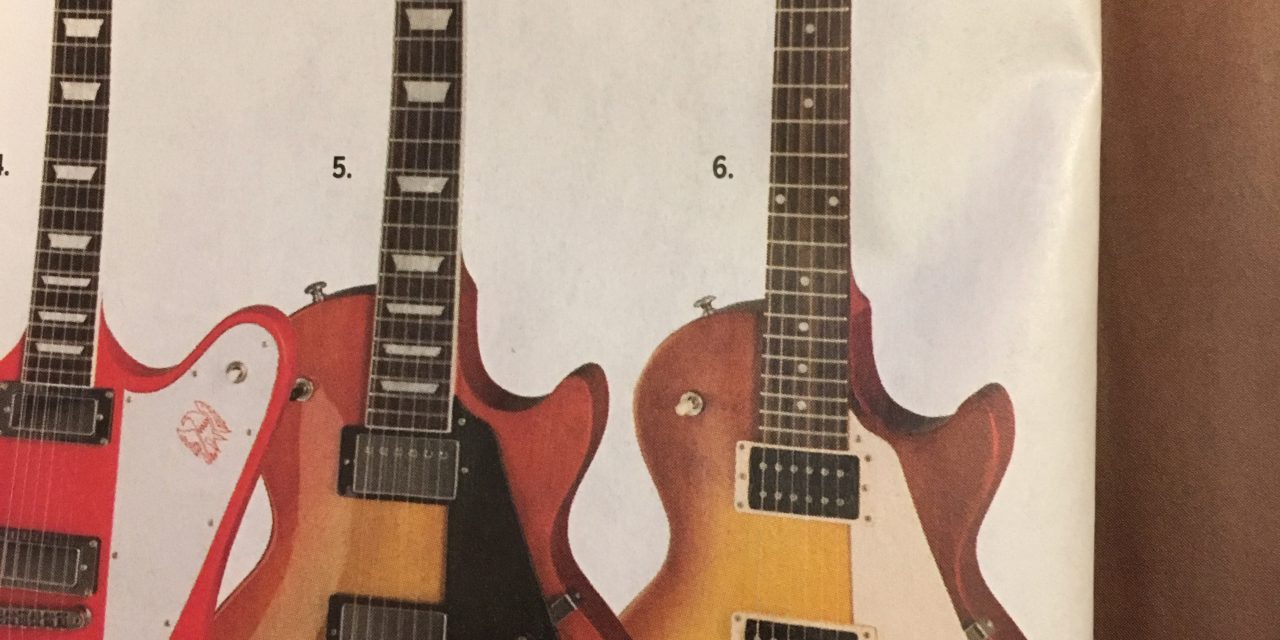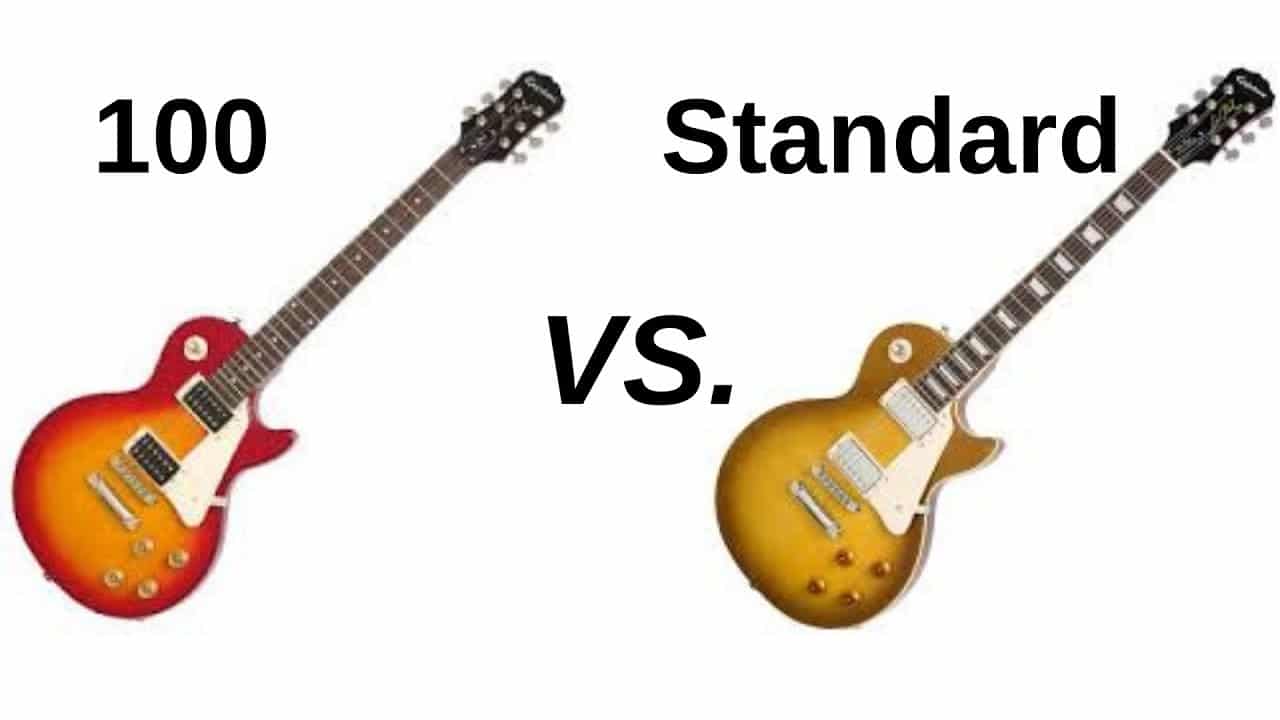Contents
While it’s really a dream for most guitar players to have a Gibson Les Paul, let’s forget about its expensive price tag for a while and focus on the more affordable substitutes. Yes, this article will focus on Epiphone Les Paul 100 vs Standard – your cheaper Les Paul guitars under $1,000.
Before we will completely shift our consciousness to the Epiphone Les Pauls, we would like to note that Epiphone isn’t just about cheap Gibson. In fact, there are famous players who prefer Epiphone rather than Gibson. And, Epiphone is also producing original lines which are also great in their own skin.
Epiphone Les Paul 100 Overview
Introduced in 1993, The Epiphone Les Paul 100 or LP-100 is a solid-body guitar based on the popular Gibson Les Paul. Primarily made for beginners and budget buyers, this is for those who can’t afford to get the original Les Paul.

It has retained most of the Les Paul features including the single-cutaway mahogany body, two tone, and two volume controls with the three-way selector switch. It has dot inlays instead of trapezoid fretboard markers of the original Les Paul. Lastly, you can enjoy different various tonal characteristics of the guitar through the open coil 700T & 650R Ceramic humbucker pickups.
Epiphone Les Paul Standard Overview
Since it’s still a Les Paul, the Standard also comes with a distinctive single-cutaway body shape. You can see that the build quality and the aesthetics are very close to the guitar where it is inspired from. Unlike the LP-100, the Standard has set-neck construction with white neck binding. Moreover, it has trapezoid inlays like the original Les Paul.

The Epiphone Standard comes with Alnico humbuckers, which are controlled by classic controls – two tone and two volume knobs, plus the pickup selector switch. Compared to the LP-100, the Standard seems to have more premium build and quality construction.
The Comparison
These entry-level electric guitars seem to have something to bring to the table. That’s why it’s important to investigate their specifications and see if you can get something useful. The Epiphone Standard is available in several models, as well. And, to avoid confusion, this article will focus on the 60s Epiphone Standard. Check the quick side-by-side comparison of the two.
| Epiphone Les Paul 100 | Epiphone Standard | |
| Body Shape | Solidbody, Les Paul | Solidbody, Les Paul Standard |
| Body Material | Mahogany with Maple top | Mahogany with flamed Maple top |
| Neck Shape | C | SlimTaper™ 60s C |
| Neck Wood | Mahogany, bolt-on | Mahogany, set neck |
| Scale Length | 24.75″ | 24.75″ |
| Fretboard Material | Rosewood | Indian Laurel |
| Fretboard Radius | 12″ | 12″ |
| Number of Frets | 22, Medium Jumbo | 22, Medium Jumbo |
| Pickups | neck pickup: 650R Humbucker bridge pickup: 700T Humbucker |
neck pickup: ProBucker-2 Humbucker bridge pickup: ProBucker-3 Humbucker |
| Controls | 2 Volume, 2 Tone, 3-way toggle pickup switch | 2 x volume, 2 x tone, 3-way toggle pickup switch |
| Tuning Machines | Tune-o-Matic Bridge with Stopbar Tailpiece | LockTone ABR Tune-O-Matic Bridge with Stopbar Tailpiece |
Build & Design
Per the table above, both Les Pauls are made of a mahogany body and maple top. Yet, the Standard has maple veneer over the curved top, which makes it nice looking. More so, it adds goodness to the tone, especially in defining every note. The LP-100 doesn’t have a curved top, just a flat maple top.
They both have the same size, but the Standard is a little heavier than the Les Paul 100. You can easily distinguish the LP-100 from Standard because the former has the basic dot inlays, while the latter has Pearloid trapezoid fretboard markers.

Les Paul 100 is available in three different color variants: Ebony, Vintage Sunburst, and Heritage Cherry Sunburst. The Les Paul Standard, on the other hand, comes with interesting color hues including Ebony, Metallic Goldtop, Cardinal Red, and Pelham Blue. In addition, you’ll have the option to choose left-handed or right-handed for the Standard.
Playability
As you can see, they are quite similar in the neck profile, and all the numbers – scale length, nut width, number of frets, etc. For the LP-100, you can find a bolt-on neck, which isn’t your traditional Les Paul neck configuration, but is still very sturdy. On the other hand, the Standard has a set neck. It has a nicer feel on its stock tuners, too, compared to the LP-100.
There are no major complaints about the playability of these guitars. However, if you have played both, you can feel a more polished Les Paul Standard. It’s also worth noting that the LP-100 is lighter and slimmer. So, if you are the kind of player who always for longer hours, consider the heftiness of the Standard. LP-100 weighs around 7.9 lbs, while the Standard is 8.5 lbs.
Tonal Capability
The 700T bridge pickup and the 650R neck pickup of the LP-100 are widely known in terms of clarity, volume, and more defined high-end tone. The Standard is equipped with more upgraded humbuckers, in which you can expect better clarity and more power. These guitars have the same controls, along with the three-way rhythm/treble switch that allows you to play around with the pickups.
Here’s a YouTube video about the sound comparison of these guitars. Prior to the sound battle, it quickly reiterates the features and specifications of the two.
Price
From the quality and performance of the Les Paul Standard, it’s quite apparent that it’s more expensive. This is justifiable because of the better pickups onboard and the quality of its finish. Even though this is pricier than the LP-100, it’s still under $1,000, which is surprising for a Les Paul.
Conclusion
When it comes to sound quality, you won’t doubt a Les Paul. However, the original Gibson Les Paul isn’t in everybody’s reach. So, we give you more affordable alternatives – Epiphone Les Paul 100 vs Standard.

Because they are very similar to each other – mahogany construction, neck, size, etc. – it’s hard to pick which is the best for you. We’ll let go straight to the point. If your budget is low, and you want a decent-sounding Les Paul, go with the LP-100. But, if you want a nice-looking guitar with more beautiful sounds coming from it, have a Standard. It’s that simple.

Hi music fan! I am Jeff. Hope that you enjoy some stuff I shared here in my personal blog.
About myself, Currently I am in charging as Artist Manager/Music Supervisor at 72 Music Management. I did managed album to Grammy Award in 2017 with 7 Nominations from 2014-2020 and had the opportunities to work with : A.J. Croce, Blind Boys of Alabama, Bobby Rush, Dom Flemons, Dustbowl Revival, Sarah Grace
Governor of the Memphis Chapter of The Recording Academy is one of a award that I am lucky to achieved.
